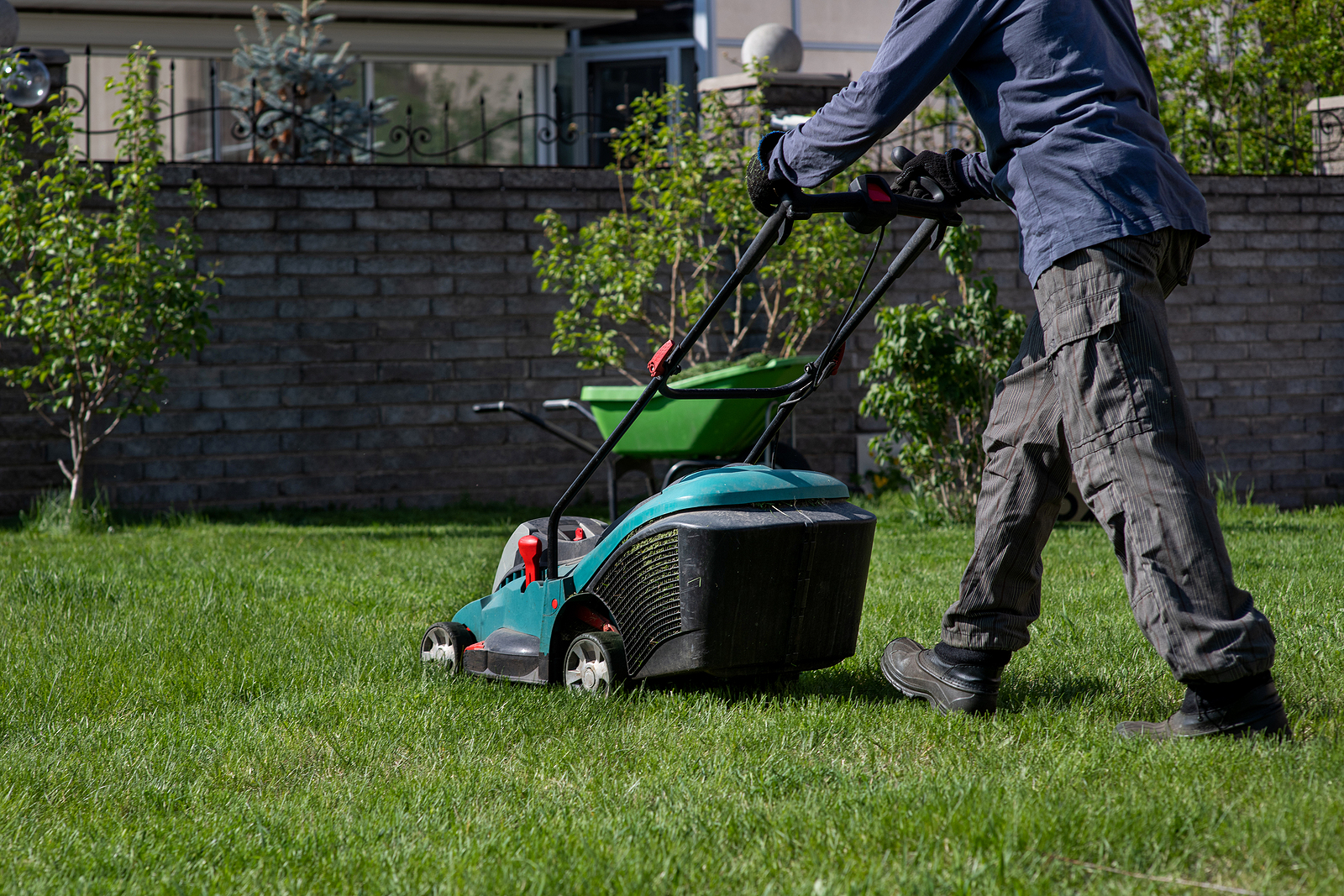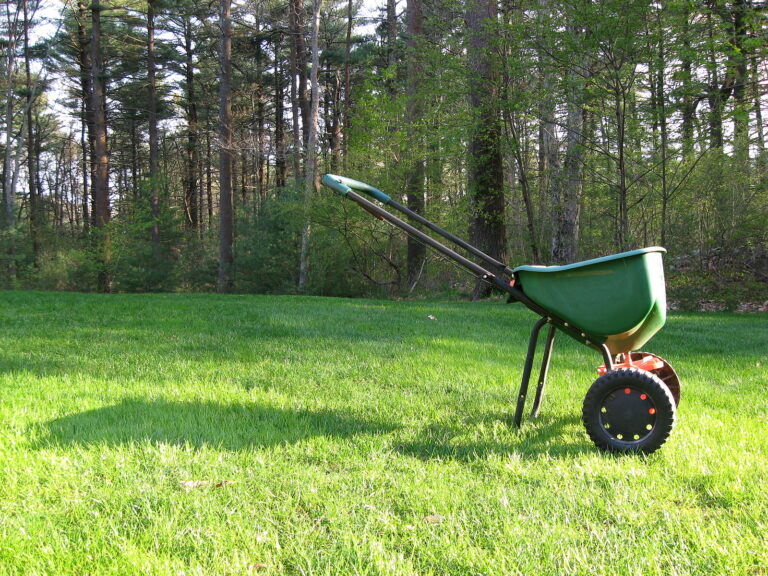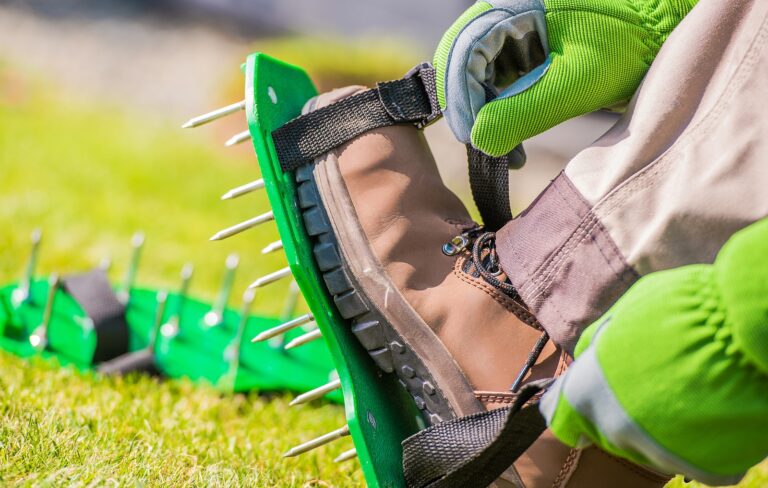How to Mow a Lawn
Many lawn problems are the result of cutting grass too short.
Grass cut too short will be stressed and susceptible to injury. Never remove more than one-third the leaf surface each time you mow.
How often to mow is directly related to how warm the weather is, how much water the lawn has received, and how much fertilizer it has been given. These factors will vary throughout the season.
As a general rule, mow the lawn weekly and never remove more than one-third of the lawn’s leaf surface.
How a lawn reacts to mowing
Mowing a lawn decreases the leaf surface area of the lawn; that decreases the lawn’s ability to photosynthesize and to produce carbohydrates essential for root, shoot, rhizome, and stolon growth.
Higher mowing heights maximize photosynthesis and reduce turf stress. Higher mowing heights also increase drought tolerance through increased root development.
Mowing frequency is determined by the grass species and its seasonal growth pattern.
Mow often enough so that no more than one-third of the existing leaf surface is removed with any one mowing. If more than one-third of the leaf surface is removed during mowing, root growth will be temporarily slowed. For example, when 50 percent of the existing Kentucky bluegrass foliage was removed, only 35 percent of the roots were growing a month later.
When a grass blade is mowed, the plant produces enzymes to heal the cut; production of wound enzymes reduces the plant’s food reserves and as a result, the plant is sapped of energy and unable to recover quickly. This leaves the grass susceptible to attack by weeds, diseases, insects, and drought.
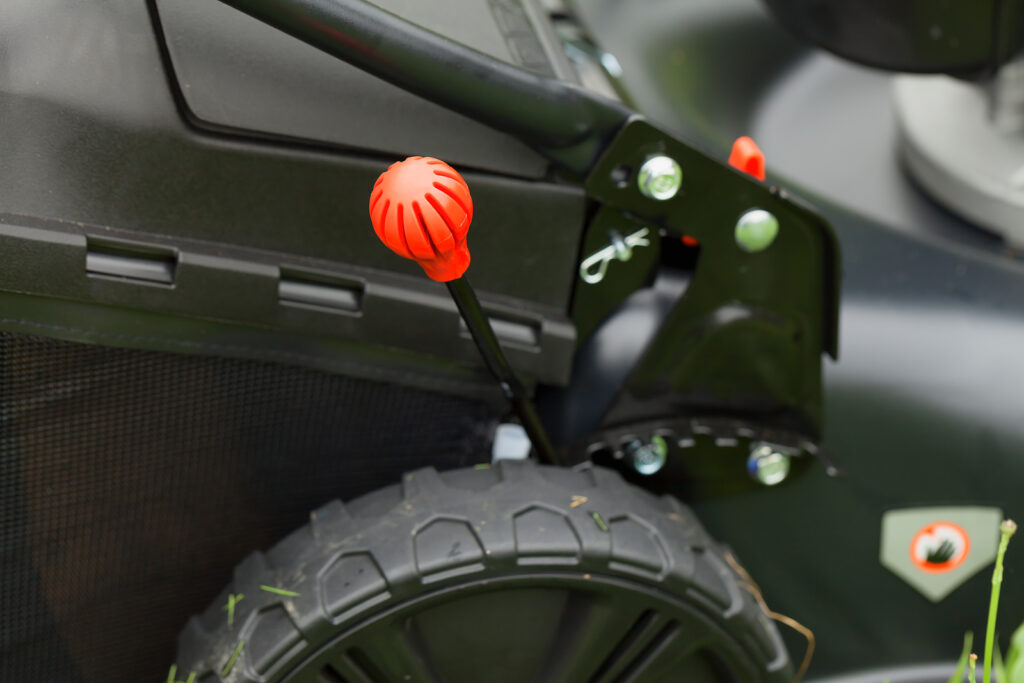
Recommended mowing heights
Use these charts as a guide for cutting your grass. Most mowers have mechanisms that allow you to adjust the mowing height.
- Cut your grass at the minimum height in spring and late fall.
- Cut the grass at the maximum height in summer and early fall.
Cool-season lawn grasses
| Grass | Minimum Height | Maximum Height |
| Annual ryegrass | 1½ inches (3.8cm) | 2½ inches (6.3cm) |
| Bentgrass | ½ inch | ¾ inch |
| Canada bluegrass | 3 inches | 4 inches |
| Chewings fescue | 1½ inches | 2½ inches |
| Hard fescue | 1½ inches | 2½ inches |
| Kentucky bluegrass | 1½ inches | 2½ inches |
| Perennial ryegrass | 1½ inches | 2½ inches |
| Red fescue | 1½ inches | 2½ inches |
| Rough bluegrass | 2 inches | 3 inches |
| Sheep fescue | 2 inches | 4 inches |
| Tall fesuce | 2½ inch | 3 inches |
| Wheatgrass | 2 inches | 2½ inch |
Warm-season lawn grasses
| Grass | Minimum Height | Maximum Height |
| Bahiagrass | 2 inches (5cm) | 4 inches (10cm) |
| Hybrid Bermudagrass | ½ inch | 2 inches |
| Blue gramagrass | 2 inches | 3 inches (7.6cm) |
| Buffalograss | 2 inches | 3 inches |
| Carpetgrass | 1 inch (2.5cm) | 2 inches |
| Centipedegrass | 1 inch | 3 inches |
| Seashore paspalum | 2 inches | 4 inches |
| St. Augustinegrass | 2 inches | 4 inches |
| Zoysiagrass | ¾ inch | 2 inches |
Mowing tips
- Avoid cutting wet grass. Wet grass can clog the mower and cause the cut to be uneven. Wet grass clumps on the lawn blocking air and light.
- Don’t cut the grass too low; this will scalp the lawn and damage the crown of the grass plants stunting root growth, stressing the plant, and encouraging more weeds.
- Grasses need to be longer in how weather to protect themselves and the soil. Cutting the grass high in summer shades the soil prevents weed seeds from germinating, and keeps the soil cooler and moister; this will encourage grassroots to grow deeper.
- More moisture—rain and irrigation—and more fertilizer will make the grass grow faster. Mow once every two weeks to twice a week depending on how fast the grass grows.
- Keep the blade sharp; dull blades result in ragged and ripped cuts that leave the grass with brown tips.
- Mow slopes on a diagonal.
Mower maintenance
Sharpen lawn mower blades at least once a year. Blunt mower blades will tear not cut grass blades. A torn blade with dieback 1/8 to ¼ inch giving the lawn a brown tinge. Ragged grass edges or susceptible to disease.
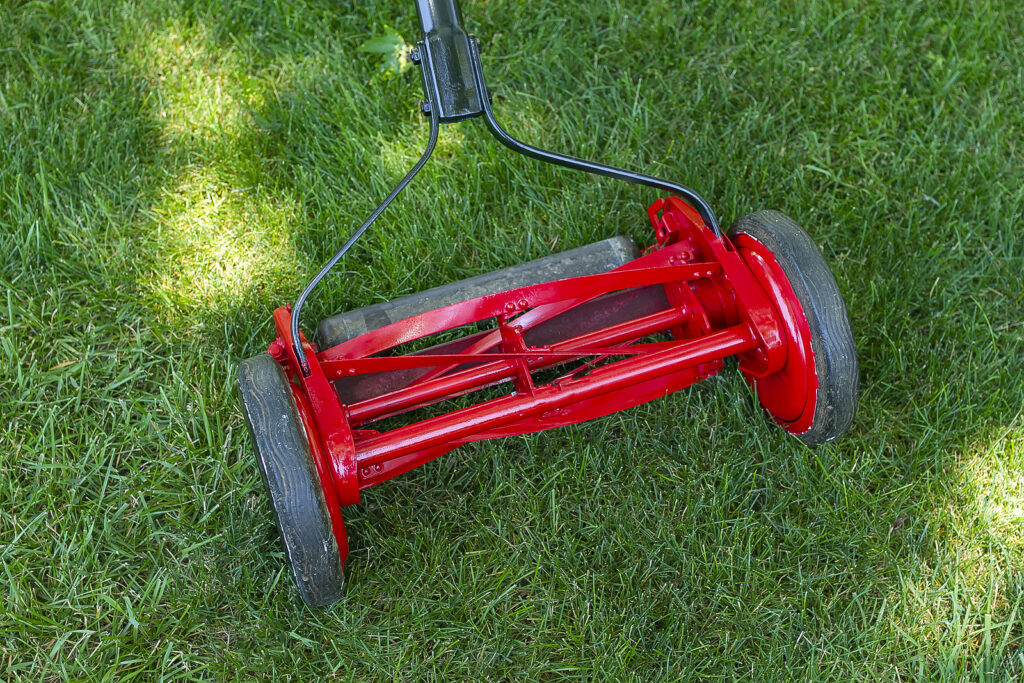
Lawn mower types
- Reel Mower has a cylinder of rotating blades. Most reel mowers have five blades; fine cut golf course mowers have seven or nine blades. Reel mowers can be push or gas-powered. A push reel mower is a good choice for a small, level lawn.
- Electric Mower is a good choice for small properties. You can choose a corded electric mower or a cordless rechargeable battery mower. A battery mower will run for an hour or slightly longer. If you choose a corded electric mower, you will need a suitable extension cord. Be careful to not run over the cord when mowing.
- Gas-Powered Mower is more powerful than an electric mower; distance is not limited by the length of the cord. Gas mowers can be hand-propelled and self-propelled as well as ride-on models. Some come with detachable bags to collect the clippings; some are mulchers that chop up the grass finely and drop back into the lawn. Gas mowers require regular maintenance.
Mowing safety
- Wear sturdy shoes to prevent slipping and to protect your feet from flying debris. Always avoid getting your feet near a running mower.
- Wear earplugs to protect your hearing; earplugs are inexpensive and disposable.
- Wear thick gloves to absorb vibrations which can take a toll on your wrists, elbows, and shoulders.
Keep kids and pets away while mowing. Mowers can toss rocks and debris.
Also of interest:

